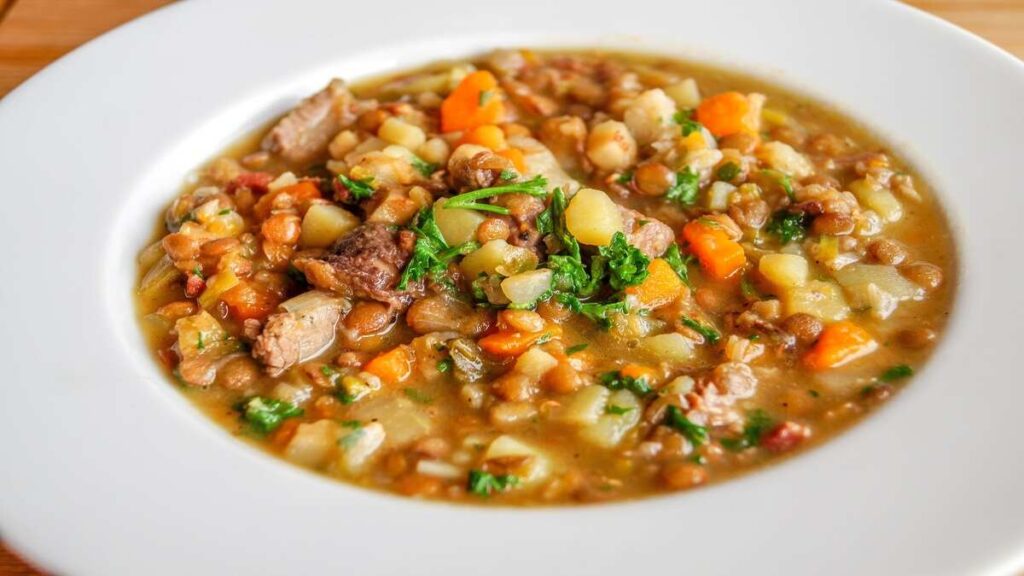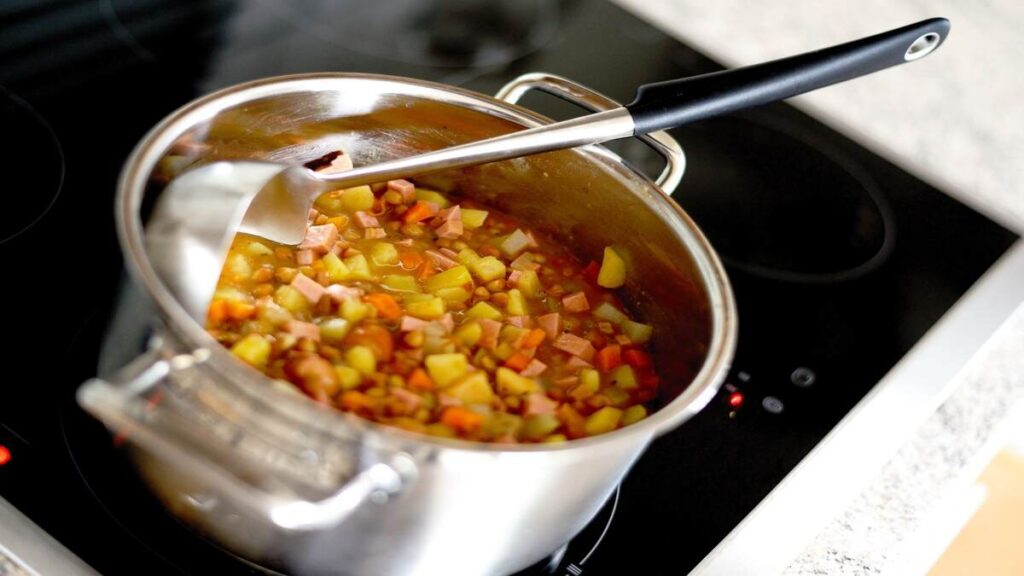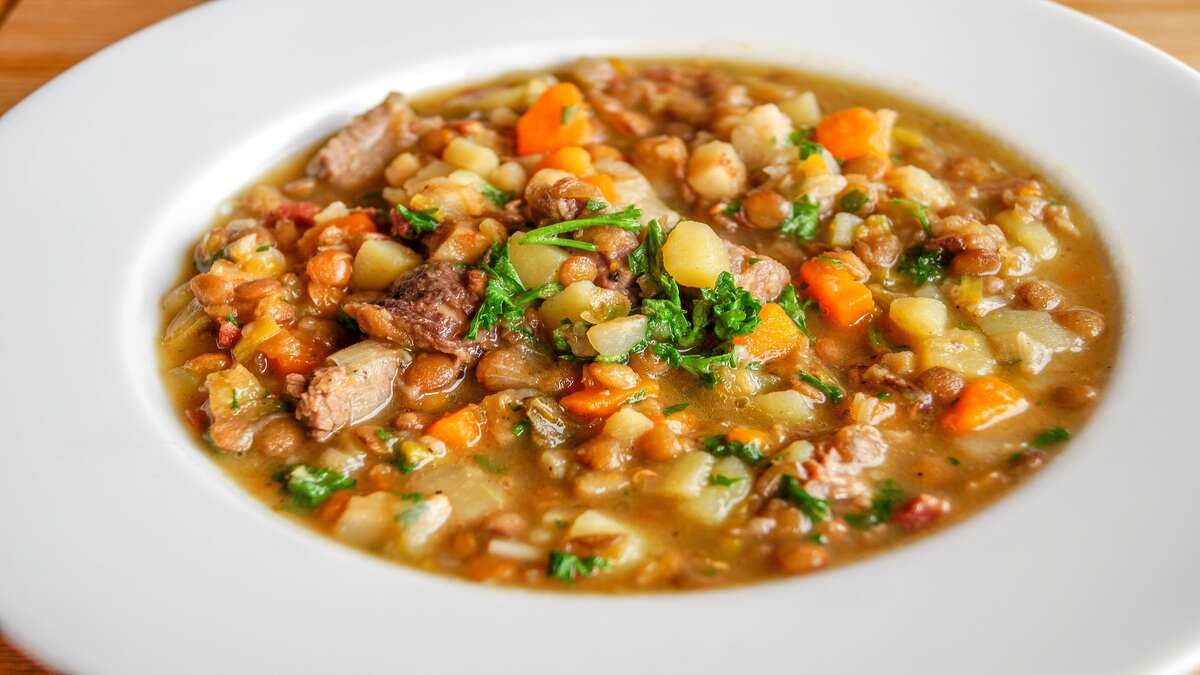Whether you’re curling up by the fire on a chilly winter evening or seeking a nourishing meal after a long day, Soups and Stews Recipe offer the perfect balance of comfort and flavor. Rich in history, diversity, and nutrition, these dishes are loved worldwide for their ability to transform humble ingredients into satisfying, soul-warming meals. In this article, we will explore everything you need to know about soups and stews—from their origins to their health benefits, along with a step-by-step guide on how to make the perfect bowl of warmth.
What Are Soups and Stews Recipe?
At their core, Soups and Stews Recipe are both liquid-based dishes that involve cooking ingredients such as meat, vegetables, grains, or legumes in water or broth. The main difference between the two lies in their consistency and cooking time.
- Soups are typically thinner, often served as a starter or light meal. They usually have a higher ratio of liquid to solid ingredients. The cooking process for soups is often quicker.
- Stews, on the other hand, are heartier and thicker, with a lower ratio of liquid to solid. They usually require a longer cooking time, allowing the ingredients to blend together more deeply, creating a rich and flavorful dish.
Both types of dishes can be made with a wide variety of ingredients, offering endless possibilities for taste and texture.

The Origins of Soups and Stews Recipe
The roots of both soups and stews date back thousands of years. Early versions of these meals were simple—just water and whatever meat or vegetables were available. They served as a way to stretch ingredients, providing nourishment to entire communities.
- Soups are thought to have originated around 6000 BC in ancient Mesopotamia, where early civilizations made broths from grains and vegetables. Over time, soups evolved to include meats and spices as trade routes and cooking techniques developed.
- Stews have even older origins. They are believed to have been cooked by our ancient ancestors in primitive clay pots, over open flames. Early stews were likely made with tough cuts of meat, which required slow cooking to become tender, making them an ideal choice for long-term preservation.
Key Ingredients in Soups and Stews Recipe
The beauty of soups and stews lies in their versatility. You can use a wide array of ingredients based on your preferences, dietary needs, and what you have on hand. Some common ingredients include:
- Meats: Chicken, beef, pork, lamb, or fish
- Vegetables: Carrots, celery, onions, tomatoes, potatoes, and greens
- Legumes: Lentils, beans, chickpeas
- Grains: Rice, barley, noodles, quinoa
- Broth or Stock: Chicken, vegetable, beef, or seafood broth
- Herbs and Spices: Bay leaves, thyme, rosemary, garlic, cumin, turmeric
For a classic chicken soup, you’d need chicken, carrots, celery, onions, and a light broth. For a hearty beef stew, beef chunks, potatoes, carrots, and beef broth would form the base.
Essential Equipment for Soups and Stews Recipe
To make soups and stews, you don’t need much fancy equipment—just some basic tools to get you started. Here’s what you’ll need:
- Large Pot or Dutch Oven: A heavy-bottomed pot ensures even heat distribution, which is especially important for stews that require longer cooking times.
- Ladle or Tongs: For serving or stirring.
- Sharp Knife: For chopping vegetables and meat.
- Cutting Board: To prep your ingredients safely and efficiently.
- Wooden Spoon: Ideal for stirring without damaging your cookware.
Step-by-Step Preparation for Making Soups and Stews Recipe
Let’s break down the basic process for making a classic chicken soup and beef stew.
Chicken Soup
- Prepare the Ingredients: Chop the vegetables (carrots, celery, onions) and slice the chicken into bite-sized pieces.
- Saute Aromatics: In your pot, sauté onions, garlic, and celery in a bit of olive oil until soft and fragrant.
- Add the Chicken: Add the chicken pieces and cook until they are lightly browned.
- Add Broth and Vegetables: Pour in your chicken broth, add carrots and any other veggies you’re using.
- Simmer: Let the soup simmer for 20–30 minutes until the chicken is fully cooked and the vegetables are tender.
- Season: Add salt, pepper, and herbs to taste. You can even add a squeeze of lemon for brightness!
Beef Stew
- Brown the Meat: Start by searing beef chunks in a hot pot until browned on all sides. This will add flavor to the stew.
- Saute Vegetables: Add onions, garlic, carrots, and celery, cooking them until softened.
- Add Stock and Herbs: Pour in beef stock and add herbs like thyme and rosemary. Bring to a simmer.
- Slow Cook: Let the stew simmer on low heat for 1.5–2 hours until the beef is tender and the flavors have melded.
- Final Seasoning: Adjust seasoning with salt and pepper before serving.
Health Benefits of Soups and Stews Recipe
Soups and stews aren’t just comforting—they can also be a great source of nutrition. Here’s why:
- High in Protein: Meat, legumes, and beans are common ingredients that provide essential protein, which helps with muscle repair and immune function.
- Rich in Vitamins and Minerals: Vegetables like carrots, onions, and leafy greens are packed with vitamins A, C, and K, as well as potassium and iron.
- Hydration: Since soups and stews are largely liquid, they help with hydration, especially during cold weather when dehydration can be sneaky.
- Boosts Immunity: Classic soups like chicken soup have been shown to help alleviate cold symptoms and support the immune system due to their anti-inflammatory properties.
Additional Tips for Making the Best Soups and Stews Recipe
- Use Homemade Stock: If possible, make your own broth for richer flavor and more control over the ingredients.
- Don’t Rush It: The longer you let your stew cook, the more the flavors will meld together. This is one of those dishes where patience pays off.
- Store Leftovers: Soups and stews often taste even better the next day after the flavors have had time to deepen.
Best Way to Serve Soups and Stews Recipe
The best way to serve your soup or stew depends on your personal taste and occasion. Here are a few suggestions:
- With Bread: A warm bowl of soup or stew is perfect when paired with a slice of crusty bread. You can also serve it with garlic bread or a grilled cheese sandwich for extra comfort.
- Topped with Fresh Herbs: Adding a sprinkle of fresh herbs, like parsley or cilantro, enhances both the flavor and the presentation.
- With a Side Salad: A fresh salad can provide a nice contrast to the richness of soups and stews, making for a well-rounded meal.

Calories, Prep Time, and Cook Time
Here’s a rough breakdown for typical soups and stews:
| Dish | Calories (per serving) | Prep Time | Cook Time |
| Chicken Soup | 200-250 | 10 minutes | 30 minutes |
| Beef Stew | 350-400 | 15 minutes | 2 hours |
Conclusion
Soups and Stews Recipe are timeless dishes that offer endless flavor possibilities, nutritional benefits, and comfort on any occasion. By understanding their origins, key ingredients, and preparation methods, you can create delicious, hearty meals to share with loved ones. Whether you prefer a simple vegetable soup or a rich, meaty stew, the versatility and ease of making these dishes make them perfect for any home cook.
FAQs About Soups and Stews
Q: Can I make Soups and Stews Recipe ahead of time?
Yes, both soups and stews often improve in flavor when made a day or two in advance. Just store them in an airtight container in the fridge.
Q: Can I freeze Soups and Stews Recipe?
Absolutely! Soups and stews freeze well. Make sure to cool them completely before transferring to a freezer-safe container. They can last up to 3 months in the freezer.
Q: AreSoups and Stews Recipe healthy?
Yes, when made with wholesome ingredients, both soups and stews can be very healthy, providing protein, vitamins, and minerals. Just be mindful of the amount of salt and fat you add.
Q: How can I make my stew thicker?
If you prefer a thicker stew, you can add ingredients like potatoes, lentils, or a roux (flour and butter mixture) to help thicken the broth.
